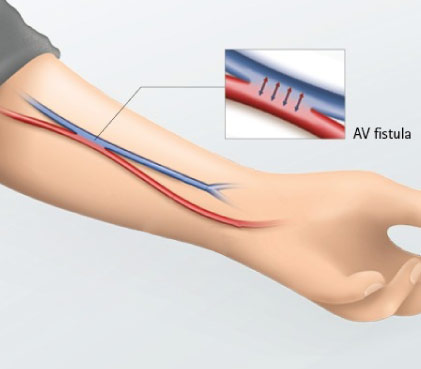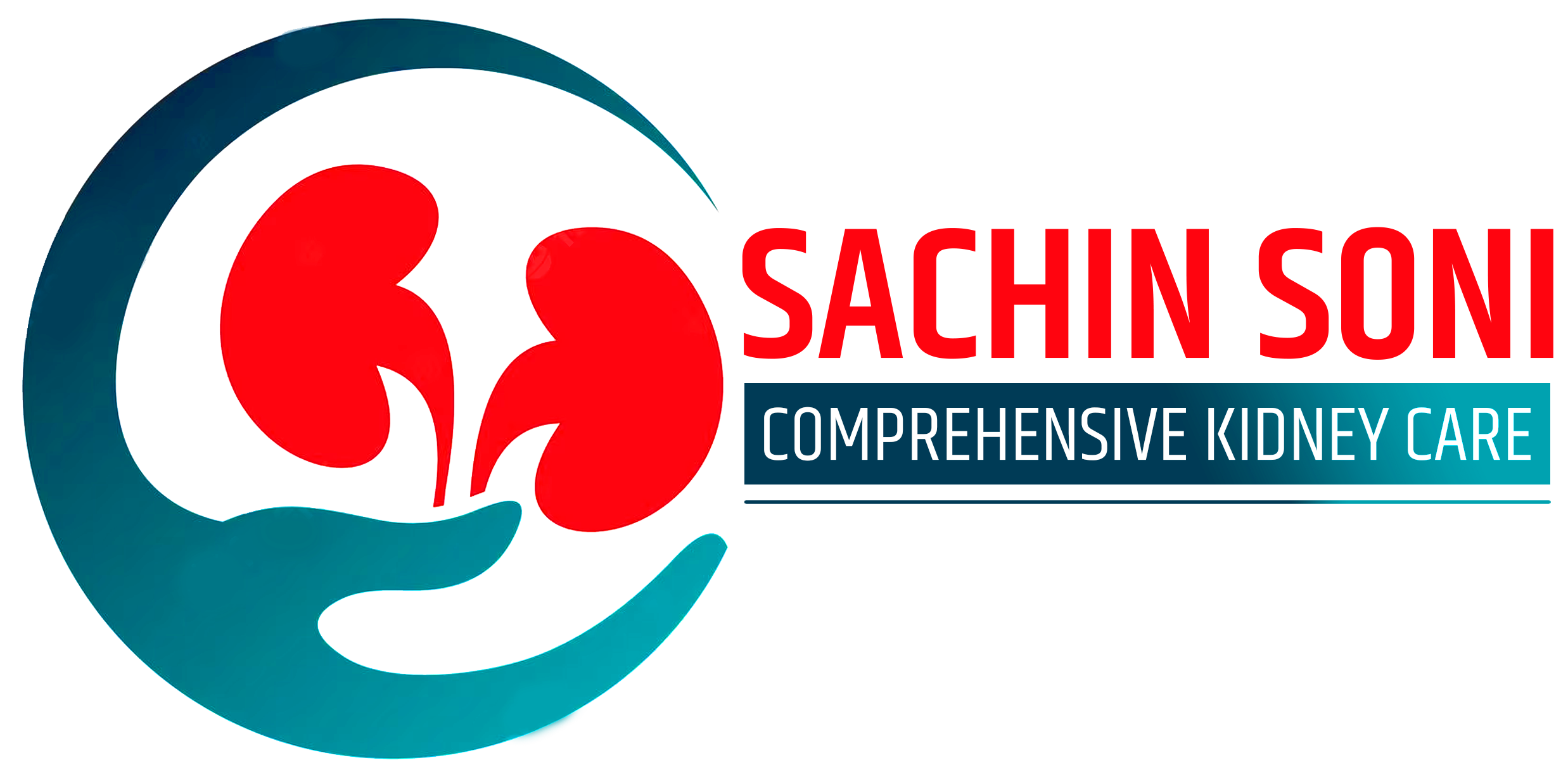AVF Surgeries
Overview
The AVF surgery is typically done under local anesthesia, and the surgeon makes an incision in the arm to identify the artery and vein. The surgeon then creates a connection between the artery and vein, which causes the vein to dilate and become thicker. This thicker vein is then suitable for repeated needle puncture for hemodialysis treatment.
AVF surgery is considered the gold standard for dialysis access and is preferred over other types of access, such as arteriovenous grafts or central venous catheters, due to its lower risk of infection and better long-term outcomes.
Complications associated with AVF surgery can include bleeding, infection, and poor blood flow through the AVF, which may require further surgical intervention or monitoring. Pre-operative evaluation and management of risk factors can help minimize the risk of complications.

Frequently Asked Questions
Recovery time varies for each patient, but most people can return to their normal activities within 4-6 weeks after the surgery. It is important to follow your surgeon’s instructions for post-operative care to minimize the risk of complications and ensure proper healing.
The lifespan of an AVF can vary from person to person, but with proper care and maintenance, it can last for several years. Regular monitoring and follow-up with your healthcare provider are important to ensure the longevity of your AVF.
As with any surgical procedure, there are some risks associated with AVF surgery. These can include bleeding, infection, poor blood flow through the AVF, nerve damage, and complications related to anesthesia. However, the overall risk of complications is low, and your surgeon will take steps to minimize the risk.
AVF surgery is typically done under local anesthesia, which numbs the area being operated on. The surgeon will make an incision in the arm to identify the artery and vein and create a connection between the two. The procedure usually takes 1-2 hours, and most patients can go home the same day.
Yes, you can still use your arm after AVF surgery, although you may need to avoid heavy lifting or strenuous activity for a few weeks while the AVF heals. Your healthcare provider will provide you with specific instructions on how to care for your AVF and when it is safe to resume normal activities.
Your healthcare provider will give you specific instructions on how to care for your AVF after surgery. This may include keeping the area clean and dry, avoiding activities that could put pressure on the AVF, and monitoring for signs of infection or poor blood flow. It is important to follow these instructions closely to minimize the risk of complications.
